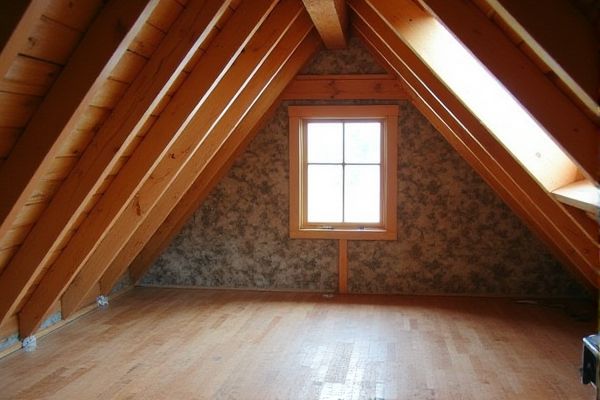
Attic baseboard heaters provide consistent, radiant warmth along the perimeter of your attic, making them ideal for even heat distribution, while attic space heaters offer more portable, targeted heating suited for quick warming or spot heating in specific areas. To find out which option best suits your attic heating needs, continue reading the rest of the article.
Table of Comparison
| Feature | Attic Baseboard Heater | Attic Space Heater |
|---|---|---|
| Installation | Mounted along attic walls or floor edges | Freestanding or wall-mounted units |
| Heating Method | Radiant heat via metal fins or tubes | Forced air or radiant heat options |
| Heat Distribution | Even, gentle heat over a larger surface | Faster, direct warm air circulation |
| Energy Efficiency | High efficiency with low operating costs | Varies; often higher energy consumption |
| Control | Thermostat-controlled | Thermostat or manual controls |
| Space Requirements | Minimal floor space; integrated design | Requires floor or wall space |
| Suitable For | Maintaining steady attic temperature | Quickly warming small attic spaces |
| Cost | Moderate initial cost | Varies; sometimes higher upfront price |
Introduction to Attic Heating Solutions
Attic baseboard heaters provide consistent, energy-efficient warmth by distributing heat evenly along the walls of your attic, making them ideal for maintaining a stable temperature. Attic space heaters offer targeted heating with rapid warm-up times, perfect for quickly warming smaller or specific areas in your attic. Choosing the right solution depends on your attic size, insulation quality, and how you intend to use the space.
Understanding Attic Baseboard Heaters
Attic baseboard heaters provide efficient, localized warmth along the walls of your attic, utilizing electric coils to radiate heat evenly throughout the space. These heaters are ideal for maintaining consistent temperature control without occupying central floor area, enhancing energy efficiency in smaller or narrow attic rooms. Compared to attic space heaters, baseboard units offer quieter operation and direct heat distribution, making them a practical choice for prolonged use in insulated attics.
Overview of Attic Space Heaters
Attic space heaters provide targeted warmth designed specifically for the unique insulation and ventilation challenges of attic environments, offering energy-efficient performance compared to traditional baseboard heaters. Unlike attic baseboard heaters that rely on conductive heat transfer along walls, space heaters use convection or radiant heating to distribute warmth evenly throughout the confined attic area. Optimal attic space heaters often feature thermostatic controls and safety mechanisms tailored to prevent overheating in low-ceiling, enclosed spaces.
Energy Efficiency Comparison
Attic baseboard heaters typically provide steady, low-wattage heat ideal for small spaces, resulting in moderate energy consumption, whereas attic space heaters often deliver higher BTU outputs for rapid warming but may consume more electricity. Your choice depends on balancing energy efficiency with heating requirements; baseboard heaters are generally more efficient for maintaining consistent temperatures, while space heaters work better for quick, intense heat. Evaluating insulation quality in your attic also impacts overall energy efficiency regardless of the heater type selected.
Installation Process and Requirements
Attic baseboard heaters require straightforward installation along the perimeter of attic walls, often needing minimal clearance and simple electrical hookups, making them suitable for confined spaces with existing wiring. In contrast, attic space heaters demand more comprehensive installation, involving ductwork and proper ventilation to ensure efficient heat distribution and safety, often necessitating professional expertise. Understanding your attic's layout and electrical capacity is crucial for selecting the right heater to meet your installation requirements and heating needs.
Safety Considerations for Each Heater
Attic baseboard heaters provide consistent, low-level heat and often feature built-in safety mechanisms like automatic shut-off and overheat protection, making them safer for enclosed attic spaces. Attic space heaters generate more intense heat and require proper ventilation and clearance to prevent fire hazards, so careful installation and monitoring are essential to ensure your safety. Choosing the right heater depends on the attic's size, insulation, and your ability to maintain safe operating conditions.
Cost Analysis: Baseboard vs Space Heaters
Attic baseboard heaters generally have higher upfront installation costs due to the need for electrical wiring and mounting along walls, whereas attic space heaters often come as portable units with lower initial expenses. Operating costs for baseboard heaters tend to be more energy-efficient over time because they provide consistent, radiant heat, while space heaters may consume more electricity due to cyclical on-off patterns. Your choice should factor in both the initial investment and long-term energy use to determine the most cost-effective heating solution for your attic.
Heating Performance and Coverage
Attic baseboard heaters provide consistent, low-profile warmth ideal for evenly heating smaller or well-insulated attic spaces, relying on convection to distribute heat along perimeter walls. Attic space heaters typically deliver higher BTU output and broader coverage, utilizing forced air or radiant technology to rapidly raise temperatures in larger or poorly insulated attics. Choosing between the two depends on specific attic size, insulation quality, and desired heating speed for optimal energy efficiency and comfort.
Maintenance and Longevity
Attic baseboard heaters typically require less frequent maintenance due to their simpler design and fewer moving parts, which contributes to a longer lifespan. In contrast, attic space heaters, often equipped with blowers or fans, may necessitate regular cleaning and occasional part replacements to maintain efficiency. Proper maintenance of either system extends operational longevity, but baseboard heaters generally offer more durable, low-maintenance performance in attic environments.
Choosing the Best Attic Heater for Your Needs
Selecting the best attic heater depends on factors such as space size, insulation quality, and heating efficiency. Attic baseboard heaters provide consistent, localized warmth with low energy consumption, ideal for smaller or well-insulated attics. In contrast, attic space heaters offer more powerful, rapid heating suitable for larger, poorly insulated areas but may consume more energy for continuous use.
 homyna.com
homyna.com